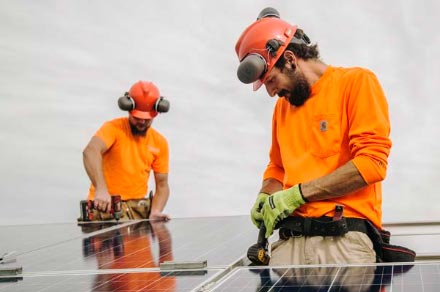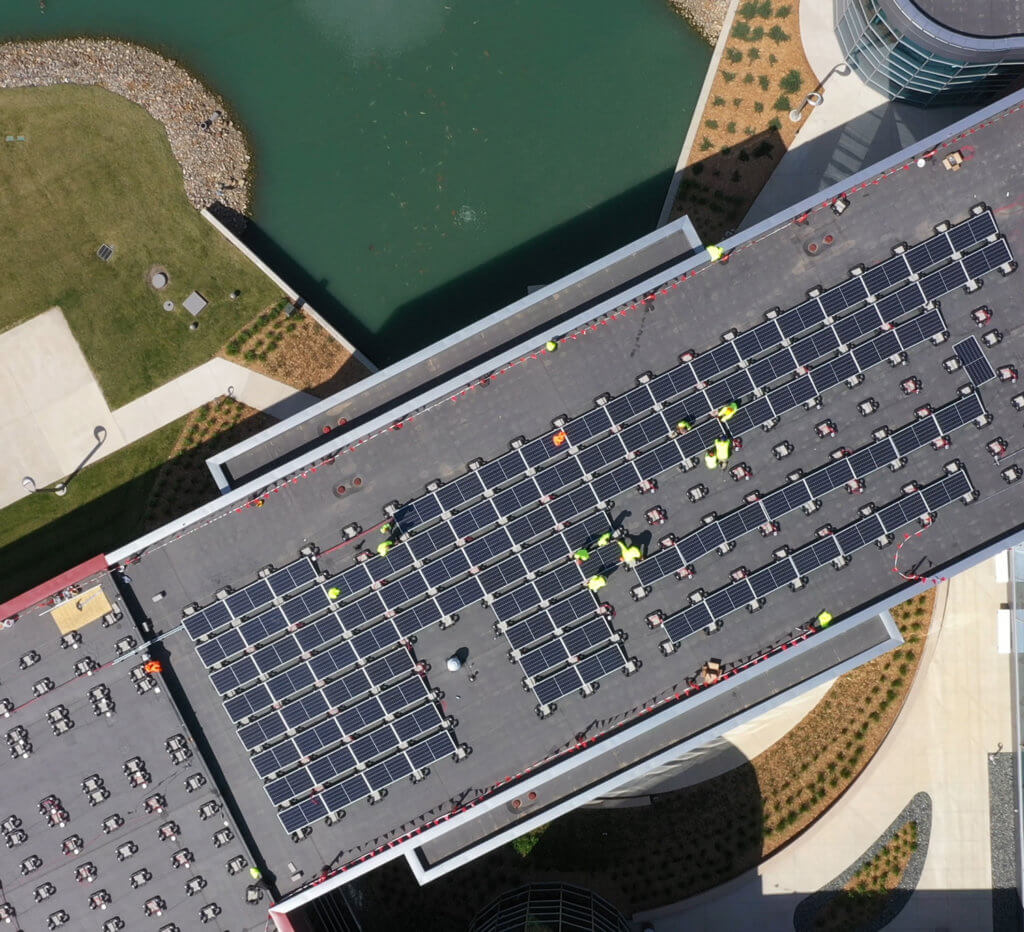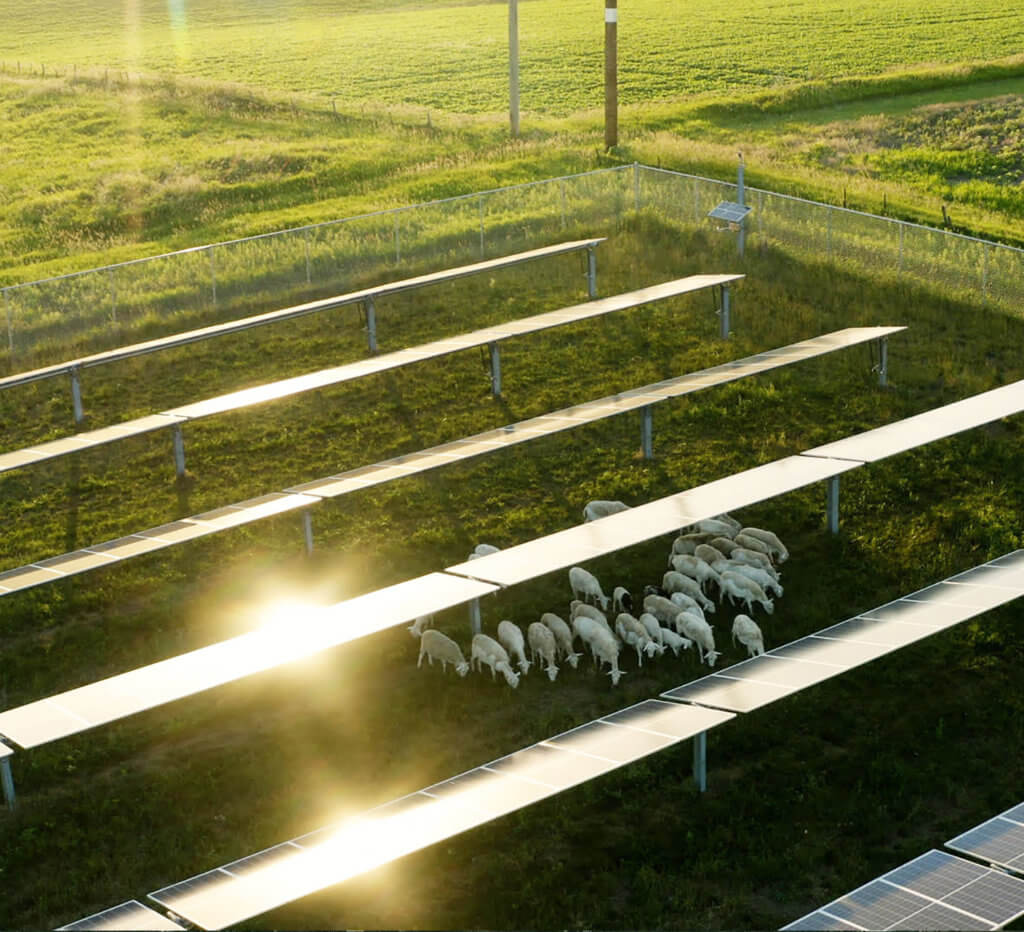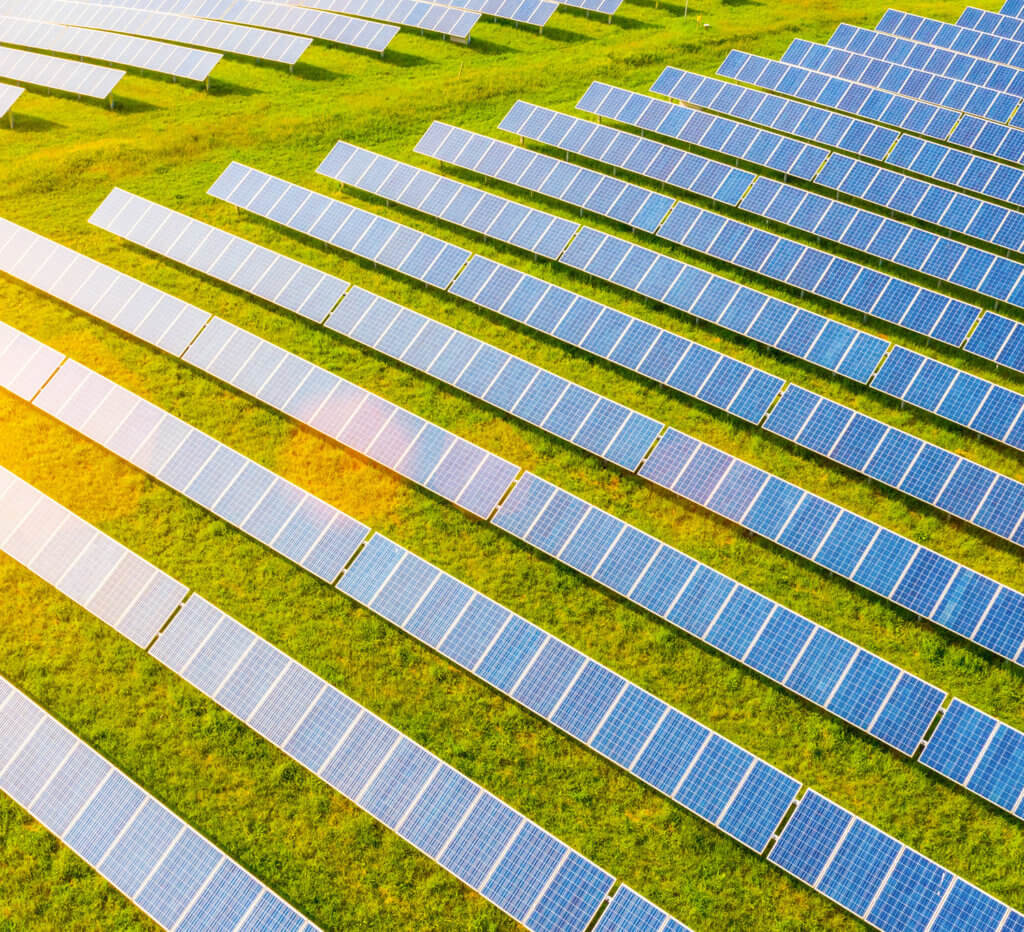FAIRFIELD, Iowa, (October 2nd, 2018) – The Fairfield Economic Development Association (FEDA) has facilitated a $200,000 research grant for Ideal Energy, a local solar company and industry leader, to further renewable energy efforts and growth in Iowa. The grant from the Iowa Economic Development Authority (IEDA) will be used to evaluate the performance of the first large-scale solar plus battery storage installations in the state. The two installations, located in Fairfield at Agri-Industrial Plastics Company and Maharishi University of Management, are Iowa’s largest solar plus storage projects and are among the most innovative renewable energy projects in the Midwest.
Two of Ideal energy’s installations, located in Fairfield at Agri-Industrial Plastics Company and Maharishi University of Management, are Iowa’s largest solar plus storage projects and are among the most innovative renewable energy projects in the Midwest.
“We are thrilled with how this grant has come together, thanks to strong leadership from the partners behind these installations,” said Joshua Laraby, executive director for FEDA. “The research will help business and industry in Iowa lower their energy costs and increase their competitiveness.”
FEDA is sponsoring the study and will partner with Ideal Energy to carry out the research. Known as the Fairfield Energy Storage System Demonstration, the study will compare the different approaches used in each project and evaluate the return on investment, operation and maintenance considerations, battery performance and effectiveness of solar tracking. Additionally, the study will analyze job creation opportunities related to the growing storage market over the course of 18 months. Iowa State University’s (ISU) Electric Power Research Center is also partnering on the project.
“When I’m selling the state of Iowa to manufacturers around the world, I always mention our energy portfolio,” said Debi Durham, Director of IEDA. “It is surprising and differentiating that we can consistently, efficiently, and affordably meet the needs of a production-based economy with 40 percent renewable sources.”
The State of Iowa is a leader in renewable energy, thanks in-part to the Iowa Energy Plan released in December 2016. The Plan is a roadmap for maintaining the state’s momentum in the energy space and has been held up as a gold standard by industry experts. Iowa ranks second in the nation in wind generation and has a fast-growing solar energy market.
This research project has several implications for Iowa. According to the National Renewable Energy Laboratory (NREL), Iowa has among the highest demand charges in the nation, with many commercial customers paying demand charges over $20/kW. NREL research shows Iowa may have more than 23,000 customers who could benefit from solar plus battery energy storage.
This research also could provide a replicable template to increase business savings, bring solar to customers who otherwise would not be able to use it effectively and make Iowa even more nationally competitive. A state-level battery energy storage committee – formed in follow-up to the Energy Plan – will evaluate the findings of this research project and consider how to best apply lessons learned throughout Iowa.
Agri-Industrial Plastics Company
The installation at Agri-Industrial Plastics Company (AIP) will consist of a 517 kilowatt (kW) solar array with a lithium-ion battery energy storage system. This is the first large-scale commercial lithium-ion installation in Iowa.
The storage component uses lithium-ion batteries, which have a long lifespan and are ideal for daily cycling. AIP operates 27 production lines, 24 hours a day, which means intensified energy needs. The battery energy storage system will extend the usefulness of AIP’s solar array into the night, saving AIP more than $42,000 per year and facilitating future growth.
Maharishi Universtiy of Management
Maharishi University of Management (MUM) is installing a 1.1 megawatt (MW) solar array with a 1.1 MWH battery energy storage system. This is the largest solar plus battery storage project in Iowa. The project will bring MUM’s renewable energy share to nearly 40 percent and significantly reduce the University’s utility bills. Construction is expected to be complete by mid-November.
The installation will use an active tracking technology that allows solar panels to follow the sun’s movement across the sky, yielding up to 25 percent more energy than a fixed-tilt array. The tracking system features a vanadium flow battery which is DC coupled with the array for maximized efficiency. MUM’s solar array will generate one-third of the annual electricity needs of the University.
How Solar Plus Battery Storage Works
Battery energy storage systems are key to further technical advancement in the renewable energy industry. Batteries can be used for emergency backup, off-grid homes and more, but their most important application is peak shaving.
Peak shaving cuts expensive charges by reducing electricity consumption during peak usage times, such as summer afternoons. The charges may increase a customer’s electrical costs for the entire year and account for as much as 30 percent to 70 percent of a customer’s utility bill.
Battery energy storage systems automatically detect when power usage exceeds a predetermined threshold and switch from the grid or solar panels to batteries until the additional demand is over. When demand is lower the batteries recharge.
About Ideal Energy
Ideal Energy, based in Fairfield, is one of Iowa’s leading solar energy firms. Ideal will design and build the solar plus battery storage systems at Agri-Industrial Plastics and Maharishi University. Ideal Energy installed the first solar + battery storage system in the state for Coralville retailer Stuff Etc and has been a pioneer in battery energy storage in the Midwest.
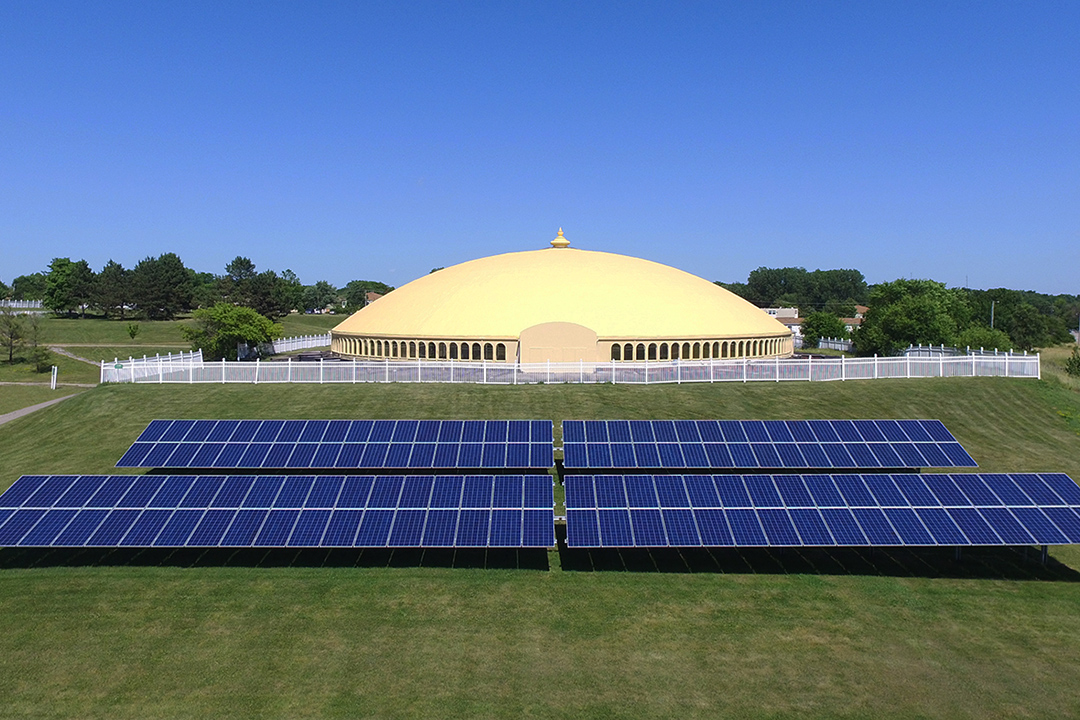
Above: A 37.8 kW installation on the MUM campus, installed by Ideal Energy in 2015. Combined with the new 1.1 MW installation, these arrays enable the university to generate 40% of their power onsite.

